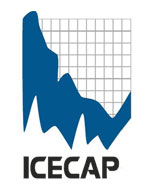By Frank J. Tipler, Professor of Mathematical Physics at Tulane University
The trillion-dollar plus porkapalooza Wreak-America Bill just passed by Congress will throw a huge amount of money into scientific research. This will be a good thing for certain scientists, but a very, very bad thing for science. Young scientists do most of the great science. Einstein was 26 when he published his relativity theory. In 1980, when I got my first government research grant at the age of 33, some 22 percent of National Institute of Health (NIH) grants were given to scientists under the age of 35.

In 2005, only three percent of NIH grants went to those under 35, while the percentage given to those over 45 increased from 22 to 77. Increasingly, government grants are used to defend dogma, not discover new truth: 28 percent of the scientists supported by NIH admitted recently to cooking data to support establishment theory, and 66 percent admitted to cutting corners to achieve the same end.
I myself no longer trust the data claims appearing in the leading science journals. The United States and the European nations have spent billions of dollars to build the Large Hadron Collider (LHC) outside Geneva, Switzerland. The new bill will spend more. The Standard Model of particle physics predicts that the central particle of the Standard Model, the Higgs Boson, must have a mass-energy of around 220 GeV, an energy well within the range of the LHC. But the particle physics establishment does not want the Higgs Boson to exist, because if it does, then particle physics would be complete, and the particle physicists would be out of a job.
Gary Taubes, in his book Nobel Dreams, has documented that the same people now in control of the LHC tried years ago to cook the data to refute the Standard Model. Can they be trusted now?
The new Wreak-America Bill will throw billions of dollars more into global warming research, a field in which data cooking has become an open scandal. Once again, the data is being adjusted to confirm the establishment theory: humans are responsible for global warming. In actual fact, satellite observations show that the Earth is now cooling, and has been cooling for about 10 years. This confirms the anti-establishment theory that the Earth warmed prior to the late 1990s due to the then-increasing number of sunspots, and is now cooling due to the now decreasing number of sunspots. The Wreak-America bill contains funds to “adjust” those pesky satellite observations, so that the data will confirm what powerful politicians wish to be true.
Read full story here.
By Margot Roosevelt, LA Times
California regulators Thursday adopted the world’s first mandatory measures to control highly potent greenhouse gases emitted by the computer manufacturing industry. The new rules would cover 85 plants, mostly in Silicon Valley. They require most computer chip makers to slash releases of sulfur hexafluoride and other fluorinated gases by more than half over the next three years.
The chemicals are used in small amounts but “pose a danger to the planet because they have such a high capacity to trap atmospheric heat,” said Mary Nichols, chairwoman of the Air Resources Board. The fluorinated gases are 6,500 to 23,900 times more potent than carbon dioxide, a greenhouse gas emitted by automobiles, power plants and refineries, among other sources. A single pound of sulfur hexafluoride has the same heat-trapping potential as 10 metric tons of carbon dioxide, or an automobile trip around the Earth.
The move to control the global-warming impact of the high-tech industry is part of a broad plan to slash the state’s greenhouse gas emissions by about 15% by 2020. California’s climate plan covers nearly every sector of the economy, including automobiles, power plants and municipal landfills. Not all companies were pleased.
“The financial impact is going to be severe,” Gus Ballis, a spokesman for chip maker NEC Electronics America Inc., a subsidiary of NEC Electronics Corp. in Japan, told the board. The Sacramento-area facility, one of California’s largest high-tech plants, will have until 2014 to comply because it is retooling. But, Ballis warned, “We’re potentially on the chopping block—whether they are going to keep us or pull our production back to Japan.”
Twenty-eight plants account for 94% of fluorinated gas emissions. Twelve already comply with the new standards. The remaining 16 would have to spend a total of $37 million to reduce their emissions, the air board said. An additional 57 facilities release such small amounts that they would only have to meet reporting requirements. Read more here.
And from the Wall Street Journal:
GUESS WHAT? CAP-AND-TRADE WILL MAKE AMERICANS POORER
By Stephen Power
The budget assumes the U.S. adopts the cap-and-trade system that would set limits on the amount of carbon dioxide and other greenhouse gases that industries can emit, and allow companies to buy and sell rights to emit those gases. The budget assumes a starting price of $20 per ton for carbon emissions, an amount that Mr. Obama’s aides says is conservative and would likely rise.
The cap-and-trade system is a key part of Mr. Obama’s broader strategy to reduce U.S. emissions of carbon dioxide by roughly 80% from 2005 levels by 2050. To help achieve that goal, Mr. Obama wants to spend some of the money raised through the auction of emissions permits for research and development of low-carbon energy technologies, such as windmills, electric cars or more efficient power grids and buildings.
But some question the government’s ability to spend all that money wisely. It is also unclear whether lawmakers will be able to resist diverting money to causes that have little to do with fighting climate change, such as deficit reduction. “Let’s just be honest and call it a carbon tax that will increase taxes on all Americans who drive a car, who have a job, who turn on a light switch, pure and simple,” said the Republican leader in the House, Rep. John Boehner of Ohio.
A fundamental question is how the government will distribute the billions of dollars in revenue generated through a emissions trading system. Lawmakers from states dependent on coal and heavy manufacturing are expected to demand that more money go toward their constituents, since they will experience higher costs associated with the transition to low-carbon energy sources.
Mr. Obama’s budget also calls for new fees and taxes on oil companies that drill on federal lands, and for closing various tax credits that the industry currently qualifies for—a step the administration says would raise about $30 billion over a decade. Beginning in 2011, Mr. Obama would assess a new excise tax on oil and gas production in the Gulf of Mexico to close what Mr. Obama’s aides say are loopholes that have give companies “excessive royalty relief.”
Oil-industry officials said Mr. Obama’s proposals would encourage the industry to shift production—and jobs—abroad. “With America in the midst of an economic recession, now is not the time to impose new taxes on the nation’s oil and natural gas industry,” Jack Gerard, president of the American Petroleum Institute, said in a written statement. Read more here.
EPW Blog
‘The increase of CO2 is not a cause for alarm and will be good for mankind’. Children should not be force-fed propaganda, masquerading as science.
Award-winning Princeton University Physicist Dr. Will Happer declared man-made global warming fears “mistaken” and noted that the Earth was currently in a “CO2 famine now.” Happer, who has published over 200 peer-reviewed scientific papers, made his remarks during today’s Environment and Public Works Full Committee Hearing entitled “Update on the Latest Global Warming Science.”
“Many people don’t realize that over geological time, we’re really in a CO2 famine now. Almost never has CO2 levels been as low as it has been in the Holocene (geologic epoch) - 280 (parts per million - ppm) - that’s unheard of. Most of the time [CO2 levels] have been at least 1000 (ppm) and it’s been quite higher than that,” Happer told the Senate Committee. To read Happer’s complete opening statement click here: [Also see: ’Four climate lobbyists for every member of Congress’ – Number of Lobbyists Up 300% & The Year of the Man-made Global Warming Skeptic
“Earth was just fine in those times,” Happer added. “The oceans were fine, plants grew, animals grew fie. So it’s baffling to me that we’re so frightened of getting nowhere close to where we started,” Happer explained. Happer also noted that “the number of (skeptical scientists) with the courage to speak out is growing” and he warned “children should not be force-fed propaganda, masquerading as science.” In December, Happer requested to be added to the groundbreaking U.S. Senate Minority Report Update: More Than 650 International Scientists Dissent Over Man-Made Global Warming Claims
Happer was pressed by the Committee on whether rising CO2 fears are valid. “I don’t think the laws of nature or physics and chemistry has changed in 80 million years. 80 million years ago the Earth was a very prosperous palace and there is no reason to suddenly think it will become bad now,” Happer added. Happer is a professor in the Department of Physics at Princeton University and former Director of Energy Research at the Department of Energy from 1990 to 1993, has published over 200 scientific papers, and is a fellow of the American Physical Society, the American Association for the Advancement of Science, and the National Academy of Sciences. Happer was reportedly fired by former Vice President Al Gore in 1993 for failing to adhere to Gore’s scientific views.
“I believe that the increase of CO2 is not a cause for alarm and will be good for mankind,” Happer told the Committee. “What about the frightening consequences of increasing levels of CO2 that we keep hearing about? In a word, they are wildly exaggerated, just as the purported benefits of prohibition were wildly exaggerated,” he explained. “At least 90% of greenhouse warming is due to water vapor and clouds. Carbon dioxide is a bit player,” he added. “But the climate is warming and CO2 is increasing. Doesn’t this prove that CO2 is causing global warming through the greenhouse effect? No, the current warming period began about 1800 at the end of the little ice age, long before there was an appreciable increase of CO2. There have been similar and even larger warmings several times in the 10,000 years since the end of the last ice age. These earlier warmings clearly had nothing to do with the combustion of fossil fuels. The current warming also seems to be due mostly to natural causes, not to increasing levels of carbon dioxide. Over the past ten years there has been no global warming, and in fact a slight cooling. This is not at all what was predicted by the IPCC models,” Happer testified.
“The existence of climate variability in the past has long been an embarrassment to those who claim that all climate change is due to man and that man can control it. When I was a schoolboy, my textbooks on earth science showed a prominent ‘medieval warm period’ at the time the Vikings settled Greenland, followed by a vicious ‘little ice age’ that drove them out. So I was very surprised when I first saw the celebrated ‘hockey stick curve,’ in the Third Assessment Report of the IPCC. I could hardly believe my eyes. Both the little ice age and the Medieval Warm Period were gone, and the newly revised temperature of the world since the year 1000 had suddenly become absolutely flat until the last hundred years when it shot up like the blade on a hockey stick. This was far from an obscure detail, and the hockey stick was trumpeted around the world as evidence that the end was near. We now know that the hockey stick has nothing to do with reality but was the result of incorrect handling of proxy temperature records and incorrect statistical analysis. There really was a little ice age and there really was a medieval warm period that was as warm or warmer than today,” Happer continued.
“The whole hockey-stick episode reminds me of the motto of Orwell’s Ministry of Information in the novel 1984: ‘He who controls the present, controls the past. He who controls the past, controls the future.’ The IPCC has made no serious attempt to model the natural variations of the earth’s temperature in the past. Whatever caused these large past variations, it was not due to people burning coal and oil. If you can’t model the past, where you know the answer pretty well, how can you model the future?” he stated.
“I keep hearing about the ‘pollutant CO2,’ or about ‘poisoning the atmosphere’ with CO2, or about minimizing our ‘carbon footprint.’ This brings to mind another Orwellian pronouncement that is worth pondering: ‘But if thought corrupts language, language can also corrupt thought.’ CO2 is not a pollutant and it is not a poison and we should not corrupt the English language by depriving ‘pollutant’ and ‘poison’ of their original meaning. Our exhaled breath contains about 4% CO2. That is 40,000 parts per million, or about 100 times the current atmospheric concentration. CO2 is absolutely essential for life on earth. Commercial greenhouse operators often use CO2 as a fertilizer to improve the health and growth rate of their plants.
Plants, and our own primate ancestors evolved when the levels of atmospheric CO2 were about 1000 ppm, a level that we will probably not reach by burning fossil fuels, and far above our current level of about 380 ppm. We try to keep CO2 levels in our U.S. Navy submarines no higher than 8,000 parts per million, about 20 time current atmospheric levels. Few adverse effects are observed at even higher levels.”
Like the temperance movement one hundred years ago the climate-catastrophe movement has enlisted the mass media, the leadership of scientific societies, the trustees of charitable foundations, and many other influential people to their cause. Just as editorials used to fulminate about the slippery path to hell behind the tavern door, hysterical op-ed’s lecture us today about the impending end of the planet and the need to stop climate change with bold political action. Many distinguished scientific journals now have editors who further the agenda of climate-change alarmism. Research papers with scientific findings contrary to the dogma of climate calamity are rejected by reviewers, many of whom fear that their research funding will be cut if any doubt is cast on the coming climate catastrophe. Read more here.


